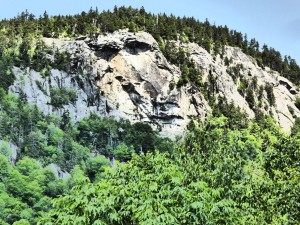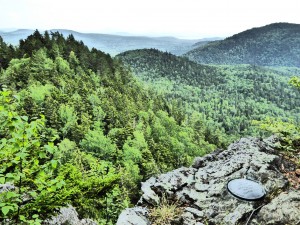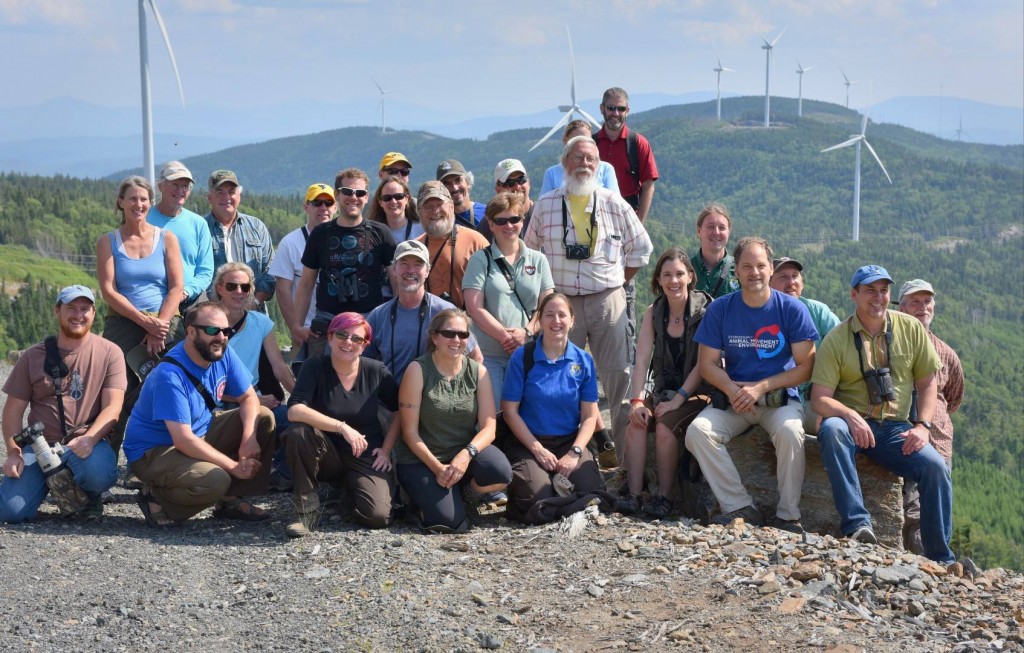August 20, 2015 at 3:00 pm
[caption id="attachment_921" align="aligncenter" width="1024"] Evening colors over Rangeley Lake[/caption]
Recently, Maine hosted the 4th meeting of the Eastern Golden Eagle Working Group (EGEWG) group in Rangeley July 9-11. This is an international collaboration of scientists and managers from over 20 institutions, agencies and private interests dedicated to research and conservation of Golden Eagles in the East. Attendees from Quebec to Florida shared insights at on wintering, migrating, and breeding Golden Eagles throughout the Appalachian corridor.
[caption id="attachment_917" align="alignright" width="300"]
Evening colors over Rangeley Lake[/caption]
Recently, Maine hosted the 4th meeting of the Eastern Golden Eagle Working Group (EGEWG) group in Rangeley July 9-11. This is an international collaboration of scientists and managers from over 20 institutions, agencies and private interests dedicated to research and conservation of Golden Eagles in the East. Attendees from Quebec to Florida shared insights at on wintering, migrating, and breeding Golden Eagles throughout the Appalachian corridor.
[caption id="attachment_917" align="alignright" width="300"] Ledge outcroppings such as this provide nesting habitat for golden eagles.[/caption]
Participants shared results from recent Golden Eagle research pertaining to documentation of habitat selection, identification of roost sites, lead exposure, and indirect effects associated with wind development, such as changes in movement patterns.
Golden Eagles are recognized as the most successful and wide-ranging species of eagle in the world, yet they have never been common in the East. However, their numbers are increasing and biologists hope they are here to stay.
Golden Eagles last nested here in the late 1990s, and have been listed as Endangered in Maine since 1987. Maine is one of the few states in the East that continues to have Golden Eagle activity in all seasons of the year. Golden Eagles occupy a wide range of conditions as they inhabit 4 continents around the northern hemisphere.
Ledge outcroppings such as this provide nesting habitat for golden eagles.[/caption]
Participants shared results from recent Golden Eagle research pertaining to documentation of habitat selection, identification of roost sites, lead exposure, and indirect effects associated with wind development, such as changes in movement patterns.
Golden Eagles are recognized as the most successful and wide-ranging species of eagle in the world, yet they have never been common in the East. However, their numbers are increasing and biologists hope they are here to stay.
Golden Eagles last nested here in the late 1990s, and have been listed as Endangered in Maine since 1987. Maine is one of the few states in the East that continues to have Golden Eagle activity in all seasons of the year. Golden Eagles occupy a wide range of conditions as they inhabit 4 continents around the northern hemisphere.
 Golden eagles breed in Quebec and winter mostly in the mid-Atlantic States. Throughout the year a few individuals can be found within Maine, as the region is on the edge of the golden eagle’s breeding and wintering ranges. The last known breeding record in Maine was from 1997 at a cliff nest that was present for at least 70 years. Similar in size, Golden Eagles and sub-adult Bald Eagles are difficult to distinguish. Tips for identification can be found at www.maine.gov.
This project was funded in part by the Maine Outdoor Heritage Fund, in which proceeds from the sale of a dedicated instant lottery ticket (currently Gopher Gold) are used to support outdoor recreation and natural resource conservation. For more information about the Maine Outdoor Heritage Fund, go to www.maine.gov/ifw/MOHF.html.
[caption id="attachment_918" align="aligncenter" width="1024"]
Golden eagles breed in Quebec and winter mostly in the mid-Atlantic States. Throughout the year a few individuals can be found within Maine, as the region is on the edge of the golden eagle’s breeding and wintering ranges. The last known breeding record in Maine was from 1997 at a cliff nest that was present for at least 70 years. Similar in size, Golden Eagles and sub-adult Bald Eagles are difficult to distinguish. Tips for identification can be found at www.maine.gov.
This project was funded in part by the Maine Outdoor Heritage Fund, in which proceeds from the sale of a dedicated instant lottery ticket (currently Gopher Gold) are used to support outdoor recreation and natural resource conservation. For more information about the Maine Outdoor Heritage Fund, go to www.maine.gov/ifw/MOHF.html.
[caption id="attachment_918" align="aligncenter" width="1024"] Biologists from all over the United States and Canada travelled to Maine for the conference. This picture was taken in western Maine near the Kibby Wind project.[/caption]
Biologists from all over the United States and Canada travelled to Maine for the conference. This picture was taken in western Maine near the Kibby Wind project.[/caption]
 Evening colors over Rangeley Lake[/caption]
Recently, Maine hosted the 4th meeting of the Eastern Golden Eagle Working Group (EGEWG) group in Rangeley July 9-11. This is an international collaboration of scientists and managers from over 20 institutions, agencies and private interests dedicated to research and conservation of Golden Eagles in the East. Attendees from Quebec to Florida shared insights at on wintering, migrating, and breeding Golden Eagles throughout the Appalachian corridor.
[caption id="attachment_917" align="alignright" width="300"]
Evening colors over Rangeley Lake[/caption]
Recently, Maine hosted the 4th meeting of the Eastern Golden Eagle Working Group (EGEWG) group in Rangeley July 9-11. This is an international collaboration of scientists and managers from over 20 institutions, agencies and private interests dedicated to research and conservation of Golden Eagles in the East. Attendees from Quebec to Florida shared insights at on wintering, migrating, and breeding Golden Eagles throughout the Appalachian corridor.
[caption id="attachment_917" align="alignright" width="300"] Ledge outcroppings such as this provide nesting habitat for golden eagles.[/caption]
Participants shared results from recent Golden Eagle research pertaining to documentation of habitat selection, identification of roost sites, lead exposure, and indirect effects associated with wind development, such as changes in movement patterns.
Golden Eagles are recognized as the most successful and wide-ranging species of eagle in the world, yet they have never been common in the East. However, their numbers are increasing and biologists hope they are here to stay.
Golden Eagles last nested here in the late 1990s, and have been listed as Endangered in Maine since 1987. Maine is one of the few states in the East that continues to have Golden Eagle activity in all seasons of the year. Golden Eagles occupy a wide range of conditions as they inhabit 4 continents around the northern hemisphere.
Ledge outcroppings such as this provide nesting habitat for golden eagles.[/caption]
Participants shared results from recent Golden Eagle research pertaining to documentation of habitat selection, identification of roost sites, lead exposure, and indirect effects associated with wind development, such as changes in movement patterns.
Golden Eagles are recognized as the most successful and wide-ranging species of eagle in the world, yet they have never been common in the East. However, their numbers are increasing and biologists hope they are here to stay.
Golden Eagles last nested here in the late 1990s, and have been listed as Endangered in Maine since 1987. Maine is one of the few states in the East that continues to have Golden Eagle activity in all seasons of the year. Golden Eagles occupy a wide range of conditions as they inhabit 4 continents around the northern hemisphere.
 Golden eagles breed in Quebec and winter mostly in the mid-Atlantic States. Throughout the year a few individuals can be found within Maine, as the region is on the edge of the golden eagle’s breeding and wintering ranges. The last known breeding record in Maine was from 1997 at a cliff nest that was present for at least 70 years. Similar in size, Golden Eagles and sub-adult Bald Eagles are difficult to distinguish. Tips for identification can be found at www.maine.gov.
This project was funded in part by the Maine Outdoor Heritage Fund, in which proceeds from the sale of a dedicated instant lottery ticket (currently Gopher Gold) are used to support outdoor recreation and natural resource conservation. For more information about the Maine Outdoor Heritage Fund, go to www.maine.gov/ifw/MOHF.html.
[caption id="attachment_918" align="aligncenter" width="1024"]
Golden eagles breed in Quebec and winter mostly in the mid-Atlantic States. Throughout the year a few individuals can be found within Maine, as the region is on the edge of the golden eagle’s breeding and wintering ranges. The last known breeding record in Maine was from 1997 at a cliff nest that was present for at least 70 years. Similar in size, Golden Eagles and sub-adult Bald Eagles are difficult to distinguish. Tips for identification can be found at www.maine.gov.
This project was funded in part by the Maine Outdoor Heritage Fund, in which proceeds from the sale of a dedicated instant lottery ticket (currently Gopher Gold) are used to support outdoor recreation and natural resource conservation. For more information about the Maine Outdoor Heritage Fund, go to www.maine.gov/ifw/MOHF.html.
[caption id="attachment_918" align="aligncenter" width="1024"] Biologists from all over the United States and Canada travelled to Maine for the conference. This picture was taken in western Maine near the Kibby Wind project.[/caption]
Biologists from all over the United States and Canada travelled to Maine for the conference. This picture was taken in western Maine near the Kibby Wind project.[/caption]